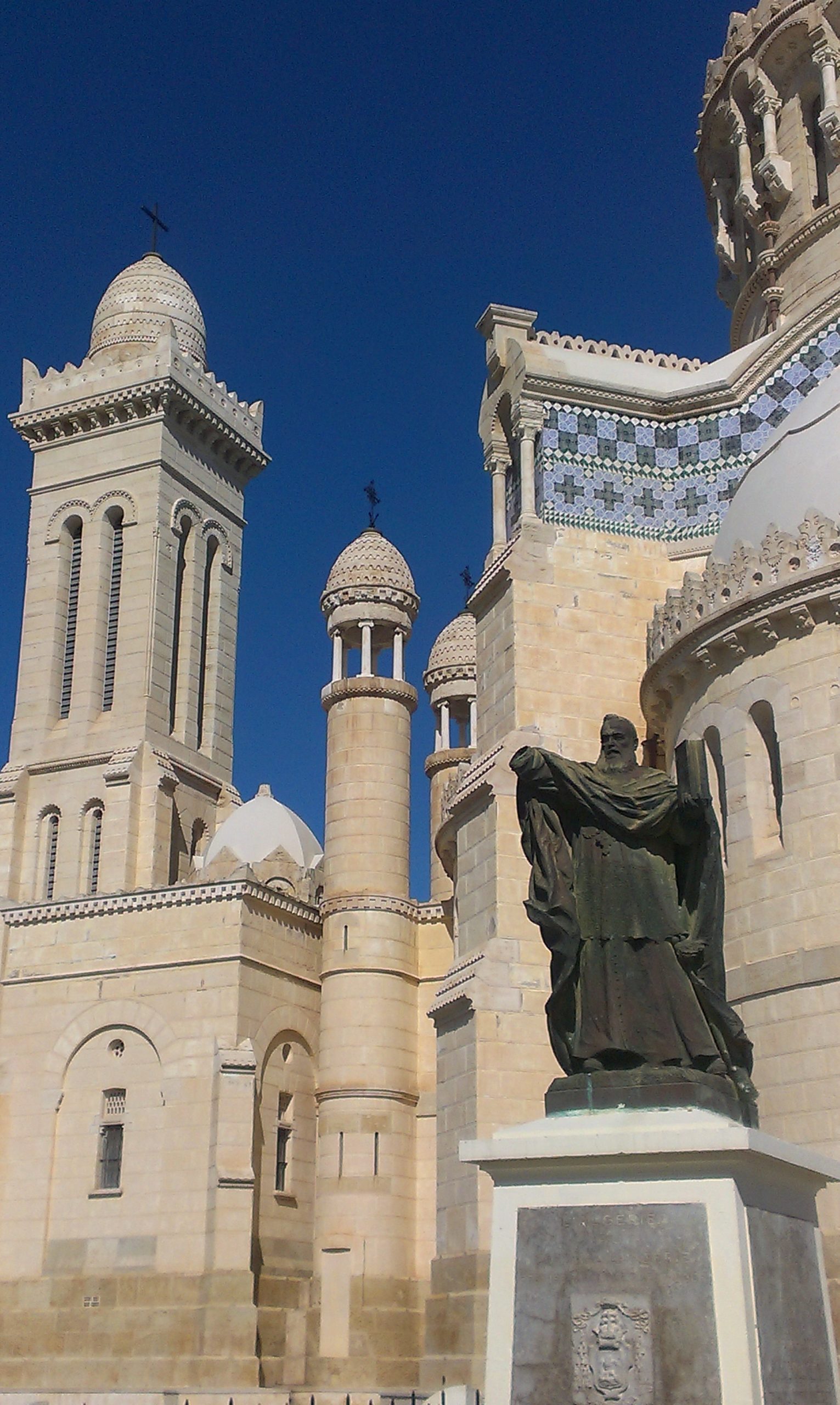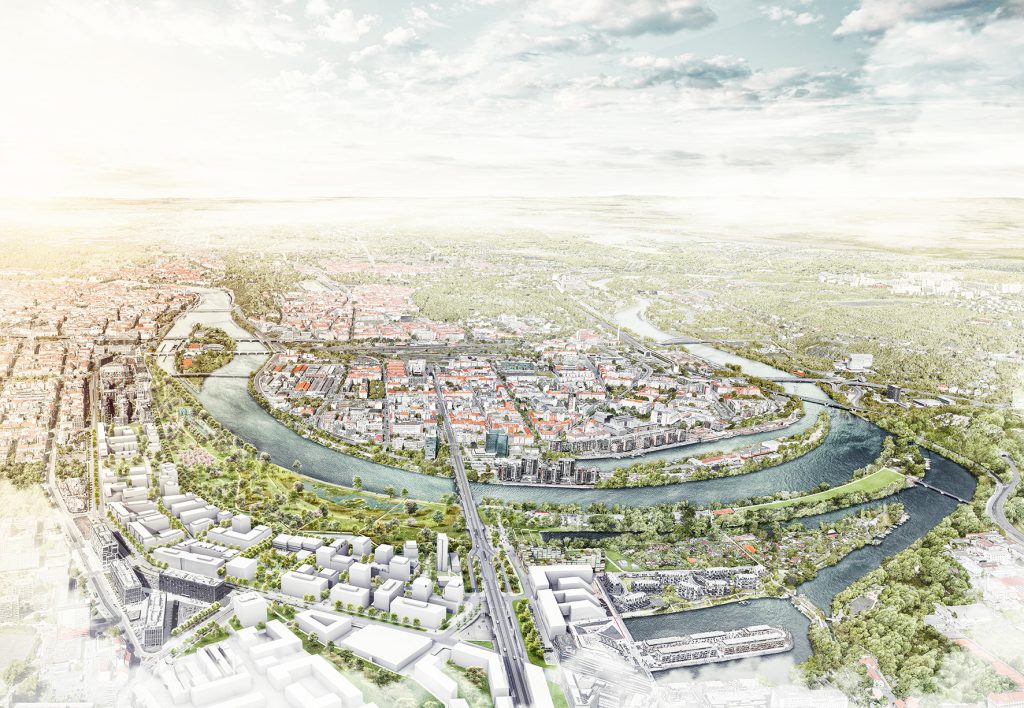
Billboard
Halfpage
Skyscrapper
Halfpage
Algiers is a city with remarkable architectural diversity, and a historical and cultural richness that makes it possible to travel through space and time. The city has always been a source of inspiration for artists, architects and writers such as Le Corbusier and Albert Camus. Algiers’ first occupation by a foreign power occurred in the 7th century B.C. with the establishment of the Phoenician maritime trading base Ikosim (Seagull Island). Pirates, Romans, Vikings, Arabs and Ottomans all settled here. European urban development began with the arrival of the French in 1830. Today, after many changes, Algiers presents itself as a city with a thousand facets and many different styles.
Algiers city walk recommended by Kamel Louafi:
Kamel Louafi is a Berliner, German-Algerian, cartographer, landscape architect, artist and author. He first studied cartography in Algeria and then landscape architecture at the TU Berlin. Despite not being involved in the day-to-day running of a business anymore, he continues to participate in social discourse whenever possible.
[tttgallery]
Front de Mer
Arriving by ship or plane, visitors first see Algiers’ maritime façade, which has a typical Mediterranean character. The Front de Mer project was initiated in 1860 by Napoleon III, with the basic aim of providing Algiers with an orderly Haussmann-like façade that would give the city a modern character and restore the link between the port and city. This large-scale project was entrusted to the architect Pierre-August Guiaucahain and architect and engineer Frédéric Chassériau. They built imposing buildings of different styles that meander like a string of pearls on a boulevard running along the coast. Overlooking the sea, they have undoubtedly shaped Algiers’ famous image as the white city.
1 Notre Dame d’Afrique
The Notre Dame d’Afrique basilica stands atop a steep coastal cliff with a view over the Casbah and the entire bay. It was built in 1872 as a Roman Catholic pilgrimage church of the Virgin Mary by the architect Jean-Eugène Fromageau.
[tttgallery id=”604″]
2 Casbah, Ketschaoua Mosque, Place des Martyrs
The Casbah, also called Medina – built in the 16th century – is Algiers’ old city. Its narrow streets, renovated palaces and museums bear witness to the reason it was declared a World Heritage Site by UNESCO in 1992. The Casbah is not only an urban heritage site, but also a symbol of Algerian resistance to the French.
At the foot of the Casbah lies the Ketschaoua Mosque, which is also classified as a World Heritage Site. It was originally built in 1436 and is considered a unique combination of Moorish and Byzantine architectural elements, and is a symbol of the history of the city of Algiers. Under the rule of Dey Hassan, it was transformed into a typical Ottoman mosque in 1794. During the French colonial period, it was used by the Catholic Church and renamed –
St. Philippe Cathedral in 1832, a name it retained until Algeria gained its independence in 1962, when it once again became a mosque. The façade is the work of the French architect Albert Ballu. North of the Ketschaoua Mosque is the Place des Martyrs. It was the first square built by the French army in 1830 as a parade ground, and was extensively renovated according to archaeological findings in 2017. The result is, unfortunately, a catastrophe.
Planners from Algeria, Egypt, Morocco, Spain, Italy, Germany and Turkey have been involved in the preservation and development of this old city as an area of world cultural heritage from the time of independence in 1962 until today – its deterioration has nevertheless continued. In December 2018, a cooperation agreement including more than one million euros for for the development of the Casbah was signed. The contract was awarded to the French architect Jean Nouvel. This triggered an outcry from French intellectuals (mainly Franco-Algerians) and Algerian architects. They accused Nouvel of furthering the destruction of the Casbah and asked him not to accept the contract.
The question has to be asked, as to what right there is to demand that only Algerians be allowed to work on the Casbah, given that Algiers’ urban development is based on the ideas and intentions of the Berbers, Phoenicians, Ottomans, French, Algerians and Russians?
[tttgallery id=”605″]
3 Hotel Aurassi
Due to its varied cuisine and the café-bar from whose terrace one has a good view of the Bay of Algiers, the hotel is a popular destination for the city’s inhabitants.
4 Climat de France
South of the Casbah, the Climat de France housing estate by architect Ferdinand Poullion was built in the 1950s. It was a response to the challenge of large-scale housing construction but also took many urban concerns into account, as well as offering what were then new ideas of urbanity and comfort for its residents.
5 Haussmann Architecture
The architecture east of the Place des Martyrs in the Rue Didouche Mourad and the Rue Larbi Ben M’hidi in the Messonier neighbourhood bears particular witness to the tradition of European cities as envisioned by Georges-Eugène Haussmann.
6 Grande Poste, Place du Gouvernement
The La Grande Post building at the Jardin de L´Horloge is a Neo-Moorish structure designed by architects Jules Voinot and Marius Tudoire. Today it houses the Museum of Postal History.
7 Cathedrale Sacre Coeur d`Algiers
The architects and civil engineers Paul Herbé, Jean Le Couteur and Rene Sarger built the Sacre Coeur d’Algiers cathedral in the Rue Ibn Hazim in 1956. They were inspired by the Gospel of John, i.e. “God has pitched his tent among us”: A slender dome that floats on several columns rises 35 metres above the floor of the nave. The dominant material inside the church is concrete.
South of the Casbah, the Climat de France housing estate by architect Ferdinand Poullion was built in the 1950s. It was a response to the challenge of large-scale housing construction, but also took many urban concerns into account, as well as offering what were then new ideas of urbanity and comfort for its residents.
8 Hotel El Djazair
The Hotel el Djazair, the former Dey Palace and an example of Moorish architecture, became the seat of the Lord George’s British mission. In 1889 it was converted into a hotel, while retaining the name of the English lord (Hotel Saint-George). In 1974 the hotel was closed due to an enlargement by the French architect Fernand Pouillon. The garden on the slope is lush, and the choice of plants is varied and beautiful. The hotel and its café is a popular destination for intellectuals, couples and tourists.
[tttgallery id=”606″ template=”content-slider”]
9 Residence des Glycines
The Centre Études Diocésain is a library managed by monks, and offers overnight accommodation in the centre of Algiers. Lectures are also held there.
10 Balcon Saint-Raphael
The terrace and the Balcon Saint-Raphael, with its view of the Bay of Algiers, are still unique today. In the 1920s a new building was planned that would have blocked the view, but after negotiations between the owners a compromise was reached. In 1923 the Claridge Hotel Corporation (the real estate firm) reached a unique agreement with the city’s administration: The balcony would remain free of buildings and in return, the municipality would build road connections and supply lines for the project.
11 Oscar Niemeyer
The Brazilian architect Oscar Niemeyer came to Algiers in the 1960s for political reasons and was courted by the then President of the Revolutionary Council and later President Houari Boumediene. Niemeyer’s most prominent buildings in Algiers are EPAU University and the La Coupole D’Alger Arena, an oval indoor sporting arena made of concrete.
12 Jardin d`Essay Hamma
Jardin d`Essai Hamma, an 80-hectare botanical garden, was laid out by the French army in 1832 and further developed by the respective directors of the garden, and has also been used as an experimental garden. It is home to around 3,000 plant species and trees. Palm avenues, various bamboo trees, dragon trees, exotic shrubs and colourful flower beds invite visitors to take an extended stroll. In 2009 the garden reopened after restoration work was completed.
13 Memorial du Martyr, Riad el-Feth
The cultural and commercial complex Riadh el-Feth, built in the 1980s, is dominated by the Maqam Echahid/Mémorial du Martyr (Martyrs’ Memorial). Polish sculptor Marian Konieczny designed the memorial, which is dedicated to the Algerian Revolution and is based on an idea by the painter Bachir Yellès. The memorial was inaugurated in 1982, on the 20th anniversary of Algeria’s independence, to commemorate the victims of the war with France. The Central Museum of the Army, the National Museum of the Mujahadeen and a large esplanade form the Riadh El-Feth, a favourite place of those seeking leisure, history and relaxation within the shops, restaurants, cinemas, museums and bookshops. Cultural events take place regularly on the forecourt.
14 Promenade des Sablettes
For a long time the inhabitants of Algiers had no access to the sea, but in 2017 that changed. Now the young and old, as well as families and couples come to this former coastal desert area by car, bus or even on foot. Today, the Promenade des Sablettes, which were designed by Frenchman Arte Charpentier and ceremoniously opened in 2014, are a hive of activity.
[tttgallery id=”607″]
15 Grande Mosque
In 2008, the Frankfurt architecture firm KSP Jürgen Engel Architekten and Darmstadt engineering firm Krebs + Kiefer won an international competition for the Djamaa el Djazaïr, the Great Mosque of Algiers . It will be the third largest mosque in the world after the two Islamic pilgrimage sites in Mecca and Medina. The gardens were designed by the Munich landscape architect Rainer Schmidt.
[tttgallery id=”608″]
_
Read the “Escape Plan” about Algiers by Kamel Louafi in topos 106.
All pictures were taken by Kamel Louafi.












